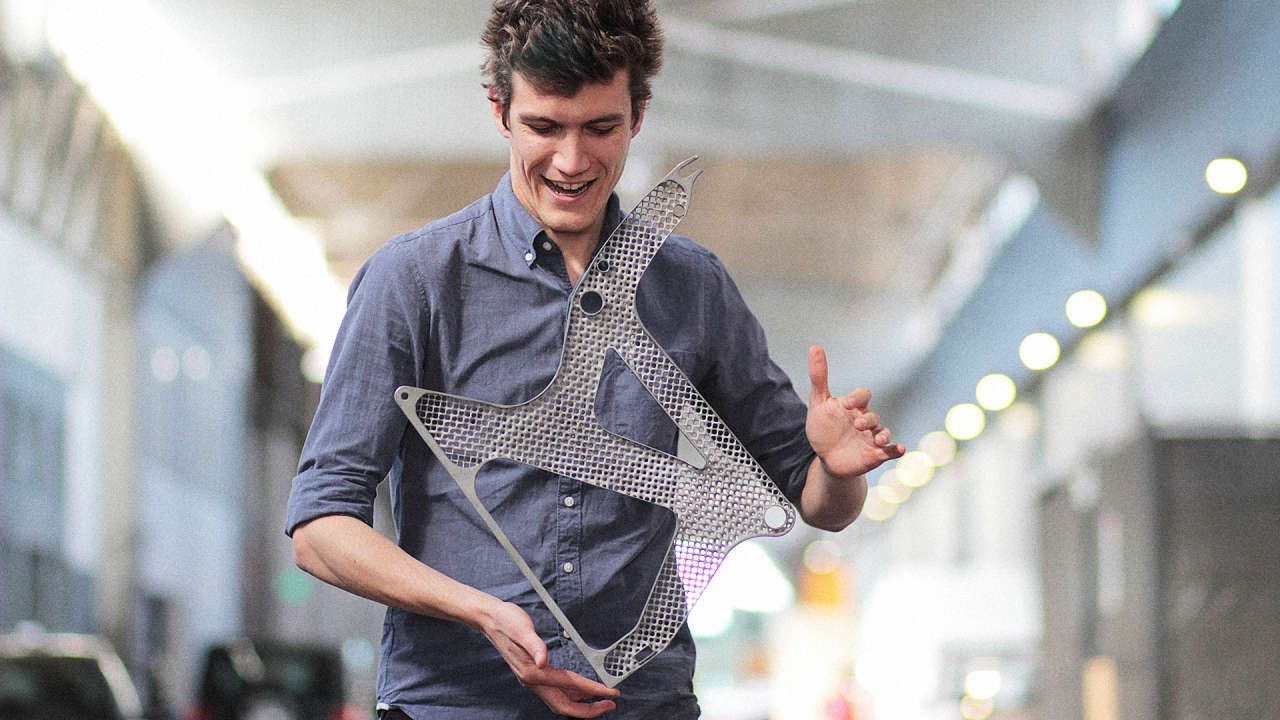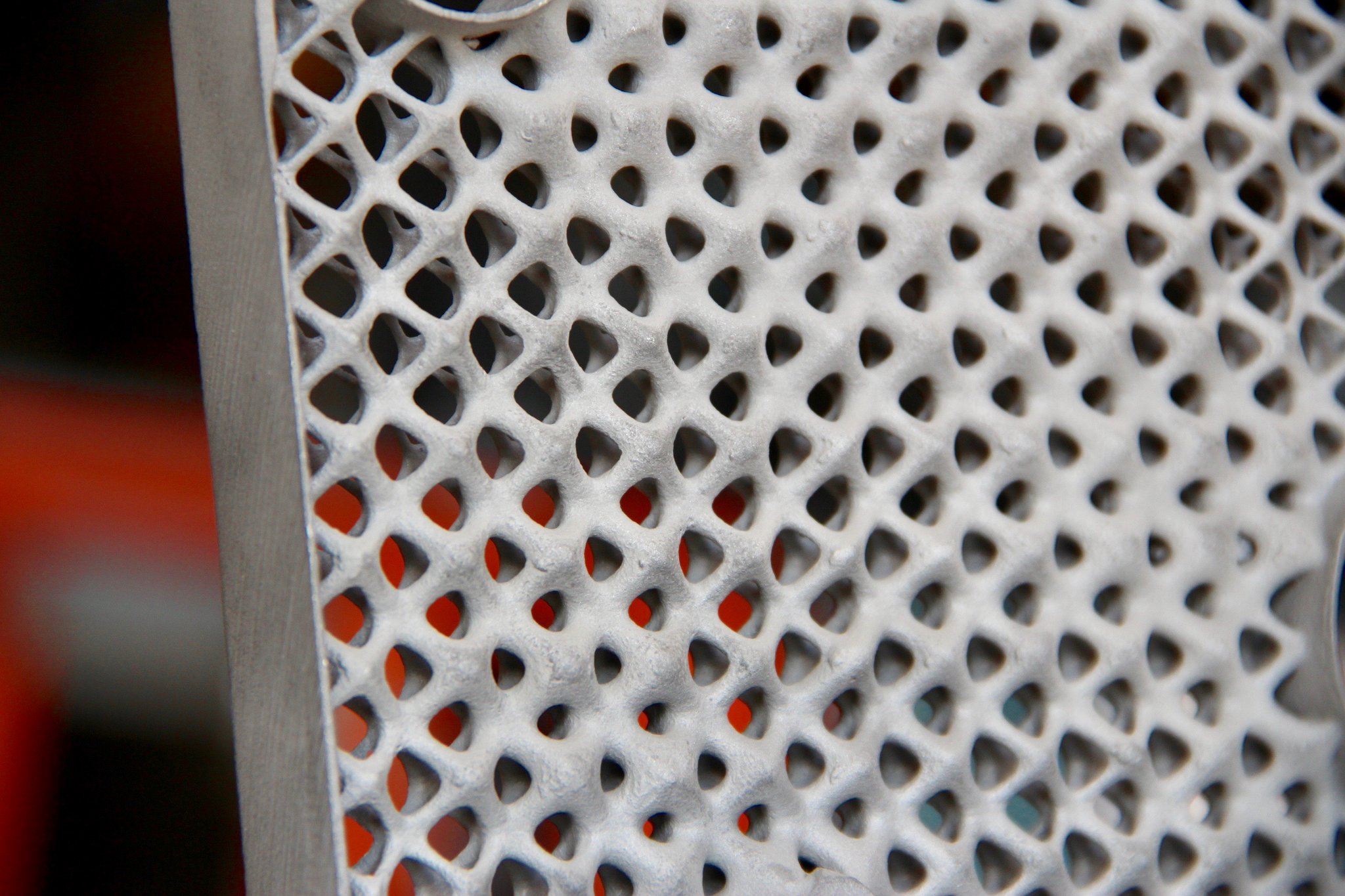Autodesk research scientist Andreas Bastian has designed an airplane seat that combines generative design with 3D printing production methods. According to Autodesk, the seat frame could relate to massive savings for airlines through a massive reduction in weight.

Generative design
The airplane seat has been designed by Andreas Bastian at Autodesk’s Pier 9 workshop in San Francisco. Using Autodesk’s Netfabb software, Bastian was able to optimize the design with an internal lattice geometry and surface optimization. The team was able to create the structure to be both lightweight but with the significant strength required.
Autodesk states the design is suitable for any standard commercial jet and Bastian’s team believes it has considerable advantages over its conventional counterpart. However unlike the airplane seat frame used in commercial aircraft, Bastian’s design is a little more complex to construct. Unable to be produced with traditional metal production techniques, Bastian turned to 3D printing.
The research scientist was also involved in Pier 9’s Project Escher. Project Escher used Netfabb software to facilitate the Cronus 3D printer which is a large-scale machine with 5 print-heads.

Investment casting
Despite the recent advancements of additive manufacturing to create vital metal parts for planes, Bastian and his colleagues required a more affordable production method. For this reason, he decided to opt for the more traditional casting method but with an important twist. Bastian decided to combine 3D printed plastic with a metal casting technique. The design was printed in plastic resin before coating in ceramic and then cast. To provide further weight savings the part was cast with magnesium rather than the traditional aluminium used in aircraft.
Bastian explains his choice,
While additive manufacturing holds great promise for the future of manufacturing, it’s still very new for many product developers. Casting, by contrast, has been around for millennia and is incredibly well understood. There are hundreds of thousands of engineers, foundries, and factories with deep expertise in it. That’s one of the reasons I am looking for a bridge between the two,
The project involved collaborating with Autodesk’s design consultant Andy Harris who states that direct metal printing wasn’t an option as “the size and cost just wouldn’t work for fabricating this part.” Similarly, online 3D printing service 3D Hubs has just announced it will be offering a 3D printed casting service to provide metal parts that are “5 times cheaper than existing methods.”

Million dollar savings
Through this unconventional method, the team found the structure was 56% lighter than the conventional aluminium seats. With 30% calculated to be purely down to the generative design.
Autodesk believes these weight savings could rapidly reduce fuel emissions and thus drastically save costs. Calculating the projected cost savings, the team evaluated the weight savings into fuel savings. By doing so, the project cites an estimate of $200 million in possible reductions over the lifetime of a fleet of 100 aircraft. Additionally, the team calculates fuel emission savings that could compare to removing 80,000 cars off the road for a year.
However despite this Bastian says, “the purpose of this project was never to sell seat frames.” He explains instead the purpose was to showcase the power of the technology. He believes the project has displayed the true power of generative design, through Netfabb, and additive manufacturing.

The airplane seat has been showcased at the RAPID + TCT conference which is taking place in Pittsburgh. 3D Printing Industry has been reporting live from the event with the latest releases.
With the 3D Printing Industry Awards taking place this month in London, make sure to place your votes to decide the winners.
For the latest 3D printing news, subscribe to our newsletter and follow us on twitter.
Featured image the airline seat frame. Photo via Autodesk.


